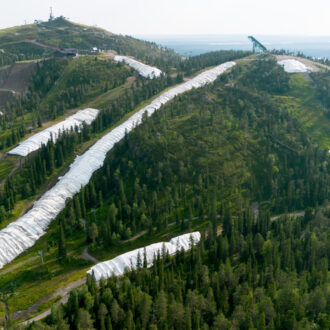“There’s no bad weather, only inadequate clothing”, a Finnish saying that is based on a long tradition of knowing what to wear in a snowstorm or on a bright January day when it’s a crisp minus 35 degrees.
“It’s very easy to tell if you’re properly clad or not. Whatever you do outdoors, if you don’t get sweaty or too cold and if you can move freely, then the clothes are right. The best idea is not to have a thick coat but lots of layers that breathe and create a warm feel on your skin”, clothes designers Mari Talka and Mari Mattila-Kämäräinen of the outdoor brand Halti emphasize.
According to Ms Talka there are two main points in the Finnish clothes design: they have to look good and they have to do the job.
“As designers, we always look for the best technical solutions and materials and test them in harsh conditions. We tend to be rather minimalistic. We think of what’s necessary and then put the materials into good use so as to protect you in an extreme weather. Good quality looks good, too.”
Finnish winter clothes manufacturers also have a tradition of cooperation with top sports professionals. Brand Manager Hanna-Liisa Erkheikki of Halti points out that this is an essential part of product development.
“Athletes are the best specialists to tell whether a piece of clothing is useful or not. If a material or detail isn’t working, they will tell you”, she laughs.
“What works in sports environment, is also certain to work in demanding everyday use.”

In the early 2000’s Halti started to invest heavily on sponsoring of winter sports.Photo: Halti
In the early 2000’s Halti started to invest heavily on sponsoring of winter sports. Halti started to work with various national ski teams and ski professionals, for example the International Ski Federation F.I.S. From 2007 to 2013 Halti was one of the main sponsors for the Alpine Ski World Championships. Co-operation with the Finnish Alpine Ski team and FIS have carried on ever since.
What about the future for Finnish winter clothes? Mari Talka explains that climate change brings new challenges as manufacturers will create more versatile clothing and use more environmentally sound processes while doing it.
“Technologies develop and intelligent materials are being tested which will react to the changes in weather. But we’ll employ them only if they prove to be durable and useful”, Mari Talka and Mari Mattila-Kämäräinen point out.’
By Ilpo Salonen, March 2016



